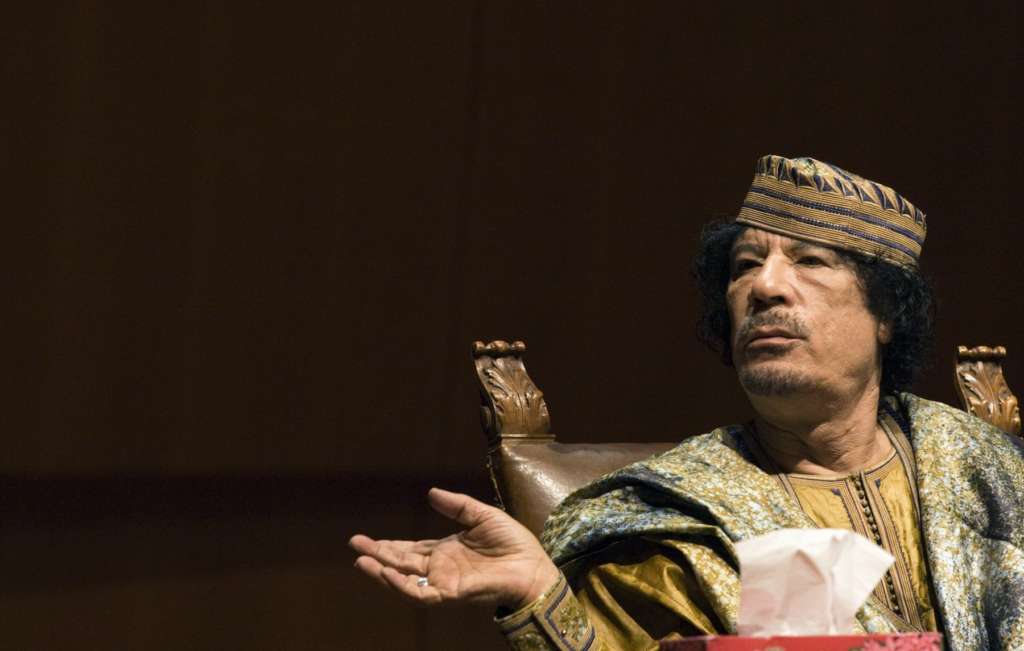Cairo- Six years ago, several Libyan military and security officials proposed to take urgent measures to stop the intifadas of Tunisia and Egypt from crossing Libya’s border despite the rejection of Muammar Gaddafi.
When the danger grew, discussions on the closure of the border began to gather steam. But it was already too late.
Since the past six years, several Middle Eastern countries have been living in a state of chaos. The peoples of these states were looking forward to more freedoms and to toppling oppressive regimes. But their desires turned into pure nightmare.
Rather than having stability, several regions began witnessing civil wars, leading to the displacement of millions of people. In the case of Libya, the country ended up having six flags hoisted in different areas, three rival governments and total chaos.
Ahmed Gaddaf al-Dam, who was Gaddafi’s special envoy and coordinator for Egyptian-Libyan ties, told Asharq Al-Awsat about meetings that the former Libyan leader held with military and security officials on the measures that they needed to take amid attempts by Tunisia’s president to hang onto power despite growing popular demands that he be toppled.
Back then, Qaddafi decided to keep the border with Tunisia open and provide all the necessary material help to keep then
Tunisian President Zine El Abidine Ben Ali in power, said Gaddaf al-Dam.
But when he saw the sparks of Tunisia’s intifada reaching Egypt, Qaddafi began to review his decision, he told Asharq Al-Awsat.
Within days, social media activists began calling for protests in Libya, Gaddaf al-Dam said, adding that the leaders of some tribes, who had pledged allegiance to Gaddafi, began turning against him.
He also accused Western countries of plotting for the toppling of Gaddafi’s regime. “Around one million flags that were raised during the protests against Gaddafi were brought from China and smuggled into Libya.”
The situation in Libya became worse when weak governments took over after the toppling of Ben Ali and Egypt’s Hosni Mubarak, said the former envoy.
Now, there are thousands of Qaddafi loyalists in jails in Tripoli and Sirte, he told the newspaper, describing the inmates as “prisoners of war.”
“Hundreds of thousands of people are displaced in neighboring countries and tens of thousands are imprisoned in Libya. They are prisoners of war and should have been released once the war ended.”
Gaddaf al-Dam has not returned to Libya since he escaped the country during the days of the intifada. “But I am convinced that I would return soon,” he said.
Gaddaf al-Dam and several Libyan groups have formed the “National Struggle Front” that has adopted a white flag as its emblem.
Asked about the flag, Qaddafi’s former envoy said: “There are now seven flags in Libya … Each flag represents a certain armed faction, a sign of deep divisions.”
“The NSF adopted a provisional white flag, pending the establishment of the state. The Libyan people would then decide the unified flag they want to symbolize their country,” he added.
